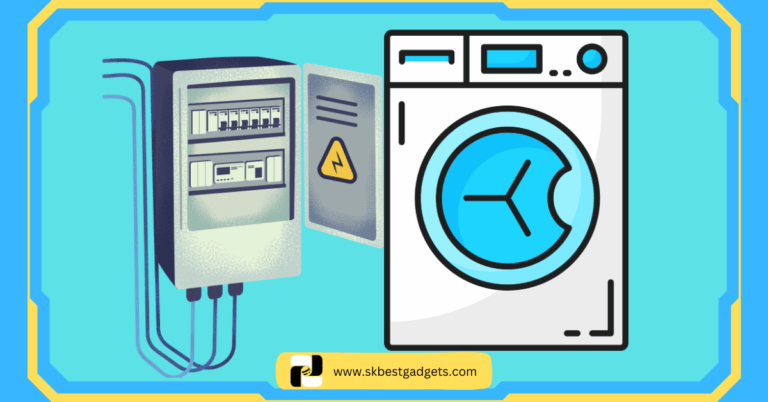How to Trust a Website? (Updated in 2023)

In an age where the internet is both a gateway to information and a realm of uncertainty, ensuring your online safety is paramount.
This concise guide equips you with essential insights and practical tips to confidently assess website legitimacy, safeguard your digital interactions, and make informed decisions.
From deciphering website authenticity to grasping the significance of trust in the digital realm, join us as we unravel the art of discernment in an evolving online landscape.
Key Takeaways
- Online Safety is Vital: The internet’s dual nature demands prioritizing your online safety.
- Assess Website Legitimacy: Equip yourself with strategies to confidently judge a website’s authenticity.
- Secure Connection Matters: Look for “https://” in the URL for secure data transmission.
- Review Privacy Policies: Understand how websites collect, use, and protect your data.
- Check for Trust Seals: Trustworthy websites often display verified security seals.
- Verify Contact Information: Legitimate sites provide clear and active contact details.
- Quality Content Indicates Trust: Reliable websites maintain high-quality, well-sourced content.
- Social Media Presence Adds Credibility: Active and verified social profiles reflect website legitimacy.
- User Reviews Matter: Look for specific, balanced reviews on external platforms.
- Stay Cautious and Informed: Your vigilant discernment is your best defense against online threats.
How to trust a website?
If you want to know if you can trust a particular website while buying from it or reading on it then below is your answer.
How to trust a website?
- Check the URL and domain name.
- Look for a secure connection (HTTPS).
- Read the privacy policy and terms of service.
- Check for trust seals and reviews.
- Use your gut instinct.
If you are still unsure about a website, you can use a website safety checker like Google Safe Browsing.
How do you verify if a website is legit?
In an era where online scams and phishing attempts are rampant, it’s crucial to discern the authenticity of a website before engaging with it. Here’s a comprehensive guide on how to verify the legitimacy of a website and ensure your digital safety.

1. Check the Domain Name and URL Structure
- Domain Extension: Verify the domain extension (e.g., .com, .org, .gov). Be cautious of unusual extensions like .biz or .xyz.
- Typos and Misspellings: Watch out for domain names with slight misspellings or substitutions. Scammers often use similar-looking names to deceive users.
2. Assess the Website Design and Layout
- Professional Design: Legitimate websites usually have a polished design with clear navigation and organized content.
- Functional Links: Test the links to ensure they direct you to the expected pages. Broken links or pages with irrelevant content can be red flags.
3. Verify Contact Information
- Contact Page: Legitimate websites provide clear contact information, including an address, phone number, and email.
- Google Map Integration: Use Google Maps to verify the listed address and ensure it matches the website’s claimed location.
4. Look for Trust Seals and Certifications
- SSL Certificate: Check for the padlock icon in the address bar, indicating a secure connection (HTTPS).
- Trust Badges: Look for trust seals from reputable organizations like BBB, VeriSign, or McAfee.
5. Read User Reviews and Testimonials
- Third-Party Platforms: Search for reviews on external platforms like Google Reviews or Trustpilot. Be cautious if all reviews are overly positive or negative.
- Authenticity: Look for detailed reviews with specific experiences, as generic or overly positive reviews might be fabricated.
6. Investigate Social Media Presence
- Official Profiles: Verify the website’s social media profiles to ensure they are active and have a substantial following.
- Consistency: Check if the website’s content and branding align with its social media presence.

7. Analyze the Content Quality
- Grammar and Spelling: Legitimate websites maintain high-quality content with proper grammar and spelling.
- Credible Sources: Look for citations and references to authoritative sources that support the website’s claims.
8. Examine the Privacy Policy and Terms of Use
- Transparency: Legitimate websites provide clear privacy policies outlining how they collect, use, and protect your data.
- Terms of Use: Review the terms of use to understand the website’s policies on usage, content, and interactions.
9. Use Online Tools and Scanners
- Scam Adviser Tools: Utilize online tools like Scamadviser or Norton Safe Web to assess a website’s safety rating.
- Domain Age: Check the domain’s age using WHOIS tools to verify its establishment.
10. Trust Your Instincts
- Too Good to Be True: Be cautious of websites offering unrealistic deals or promises.
- Unsolicited Emails: Avoid clicking on links from unsolicited emails, as they could lead to phishing sites.
By following these steps, you can confidently evaluate a website’s legitimacy and protect yourself from potential online threats.
Remember that your digital safety is paramount, and thorough verification is your best defense against scams.
Big Tip For You
When browsing online, always be cautious of websites that ask for personal or sensitive information. Look for the “https://” protocol and trust seals to ensure secure connections. If a site’s address seems misspelled, its design outdated, or its content error-filled, avoid it to protect yourself from potential threats.
How do I make sure a website is safe?
When you’re browsing the web, it’s important to make sure that the websites you visit are safe.
- Look for the https:// protocol. This means that the website is using a secure connection, which helps to protect your data from being intercepted.
- Check for a trust seal. A trust seal is a symbol that is displayed on a website to indicate that it has been verified by a third-party security organization.
- Be wary of websites that ask for personal information. If a website asks for your personal information, such as your credit card number or Social Security number, make sure that it is a reputable website before you provide any information.
- Look for warning signs. If you see any of the following warning signs, it’s best to avoid the website:
- The website’s address does not start with https://.
- The website’s address is misspelled or looks suspicious.
- The website’s security certificate is expired or invalid.
- The website’s content is full of errors or typos.
- The website’s design looks outdated or unprofessional.

By following these tips, you can help to protect yourself from visiting unsafe websites.
Additional Tips:
- Use a security software program to scan your computer for malware.
- Keep your software up to date. Software updates often include security patches that can help to protect your computer from malware.
- Be careful what you click on. If you receive an email or text message that contains a link, don’t click on it unless you’re sure that it is from a legitimate source.
- Be aware of phishing scams. Phishing scams are emails or text messages that attempt to trick you into providing your personal information.
What are the best ways to check if a website is trustworthy or not?
There are a few things you can do to check if a website is trustworthy or not. Here are some tips:
Check the domain name and URL structure. Make sure the domain extension is legitimate (e.g., .com, .org, .gov). Be cautious of unusual extensions like .biz or .xyz. Also, watch out for domain names with slight misspellings or substitutions. Scammers often use similar-looking names to deceive users.
Assess the website design and layout. Legitimate websites usually have a polished design with clear navigation and organized content. Test the links to ensure they direct you to the expected pages. Broken links or pages with irrelevant content can be red flags.
Verify contact information. Legitimate websites provide clear contact information, including an address, phone number, and email. You can try to contact them using the information provided to see if they respond.

Look for trust seals and certifications. Some websites display trust seals from reputable organizations like BBB, VeriSign, or McAfee. These seals can indicate that the website has been vetted by a third party and has met certain security standards.
Read user reviews and testimonials. You can search for reviews on external platforms like Google Reviews or Trustpilot. Be cautious if all reviews are overly positive or negative. Look for detailed reviews with specific experiences, as generic or overly positive reviews might be fabricated.
Investigate social media presence. Legitimate websites should have active and well-maintained social media profiles. You can check to see if the website has a presence on platforms like Facebook, Twitter, and LinkedIn.
Analyze the content quality. Legitimate websites maintain high-quality content with proper grammar and spelling. They should also cite their sources and provide evidence to support their claims.
Examine the privacy policy and terms of use. Legitimate websites provide clear privacy policies outlining how they collect, use, and protect your data. You should read these policies carefully before providing any personal information to the website.
Use online tools and scanners. Several online tools can help you assess a website’s safety rating. These tools can scan the website for malware and other security threats.
By following these tips, you can help to protect yourself from visiting unsafe websites and falling victim to scams.

Why does website trust matter?
In today’s digital landscape, website trust is a foundation for safe online experiences. Trustworthy websites foster secure interactions and safeguard your personal information. Here’s why website trust matters:
1. Protects Personal Information
Trustworthy websites prioritize data security. When you share personal information, such as financial details or contact information, with a trusted site, you reduce the risk of identity theft, scams, and unauthorized access.
2. Prevents Scams and Fraud
Trusted websites undergo stringent verification processes, making it harder for scammers to operate. A reputable website is less likely to engage in fraudulent activities that could compromise your sensitive data or financial well-being.
3. Ensures Reliable Content
Websites built on trust prioritize accuracy and credibility in their content. When you visit a trusted site, you can rely on accurate information, credible sources, and well-researched content that adds value to your online experiences.
4. Builds Confidence
Trustworthy websites create a positive user experience. Their professionalism, user-friendly design, and transparent communication build confidence in their offerings, ensuring you feel comfortable engaging with their content and services.

5. Reduces Online Risks
Untrustworthy websites may contain malicious software, viruses, or phishing attempts. Trustworthy sites employ security measures to keep your devices and data safe, reducing the risk of falling victim to online threats.
6. Facilitates Secure Transactions
When making online purchases or sharing payment information, website trust is paramount. Trusted sites implement secure payment gateways and encryption to protect your financial data during transactions.
7. Supports Information Integrity
Trusted websites prioritize the accuracy and reliability of their content. By seeking information from reputable sources, you can make informed decisions and avoid misinformation that may harm your interests.
8. Promotes Ethical Practices
Websites built on trust uphold ethical standards in their interactions. They prioritize user consent, transparent data collection, and responsible data usage, enhancing your privacy and rights.
9. Fosters Positive Online Relationships
Interacting with trustworthy websites cultivates positive relationships in the digital realm. You can engage in discussions, share your opinions, and collaborate with confidence, knowing your interactions are protected.

Important FAQs
What is the significance of website trust in today’s digital world?
How can I verify if a website is legitimate?
Why is it important to assess a website’s domain extension?
What are trust seals, and how do they contribute to website trust?
How do I know if a website’s reviews and testimonials are genuine?
Can social media presence indicate a website’s trustworthiness?
What role does content quality play in assessing website trust?
How can I safeguard my personal information when interacting with websites?
Final Thoughts
In an era where the digital landscape intertwines information and uncertainty, prioritizing website trust becomes a paramount shield against online threats.
Armed with comprehensive insights and pragmatic strategies, you’re now equipped to discern authenticity, safeguard your digital interactions, and forge ahead with informed decisions.
By following these meticulous steps, you can confidently navigate the vast digital landscape, ensuring your online experiences are secure, enriching, and free from the shadows of doubt.
Remember, your vigilant discernment is the key to unlocking the doors of trust in an ever-evolving online world.
Stay cautious, stay informed, and forge ahead with unwavering confidence. Your digital safety is the foundation that empowers your online journey.
Want to Watch a Video?
This article will help you in buying:
All images by Canva.com
Best Washing Machines (Buying Guide 2023)
“Time for a new washing machine? 🧺 Check out our 2023 buying guide to find the best one for your laundry needs. Don’t miss out on cleaner, easier laundry days – read now!”







